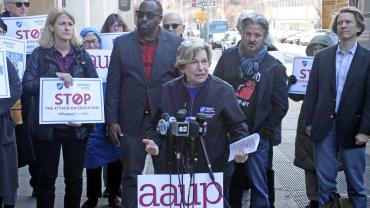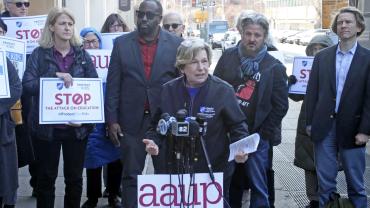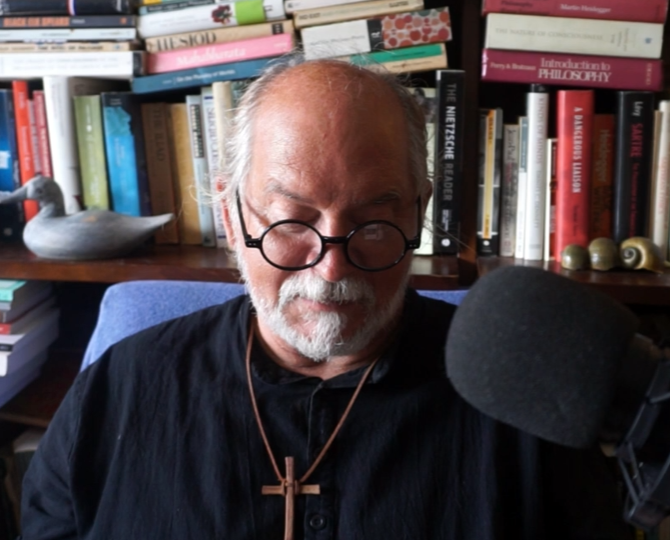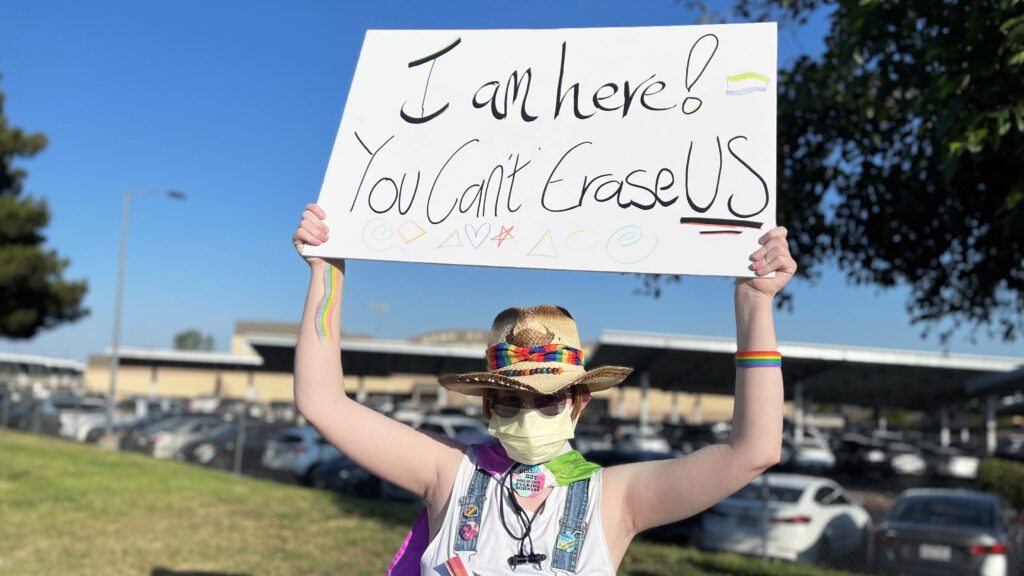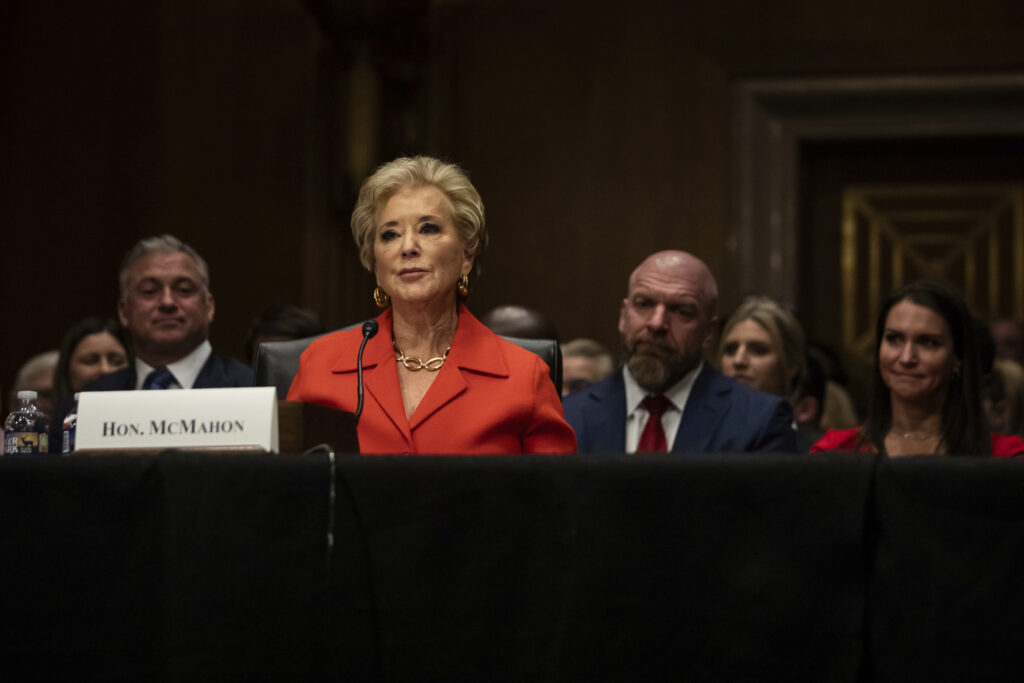Since Trump invited Elon Musk and his DOGE team to cut the federal budget, the federal government has been subject to a bloodbath of firings, layoffs, and closed agencies. Some of the most shocking budget cuts have focused on scientific research. Reckless cuts have been imposed on the National Science Foundation and on every part of the Department of Health and Human Services, where the Secretary–conspiracy theorist Robert F. Kennedy Jr.–is crushing genuine research and prioritizing his obsession with vaccines as the cause of autism, which has been debunked.
Trump has blocked the payment of millions of dollars to universities that fund basic science research. He is using those blocks to force universities to stop DEI programs.
We can understand why Kennedy wants to destroy science: it has an annoying tendency to undercut his pet conspiracy theories. No matter what science says, he will continue to warn the public that vaccines are dangerous, that fluoridating water is dangerous, and anything that contradicts his ideology is fake, regardless of how many scientists disagree. WHO you gonna believe? The addled RFK Jr. or the world’s top scientists? Or Ghostbusters?
But we do not know why Trump put the nation’s public health agencies into the hands of a man who does not respect science.
Why does Trump want more children to die of measles? Why does he allow Elon Musk to shut down agencies like USAID that have saved millions of lives? Why he is cancelling grants to universities for basic scientific research? Why does he want to stop the work of scientists who are seeking cures for cancer, tuberculosis, AIDS, and other lethal diseases? I don’t know.
Frankly, the cuts are coming so fast that I can’t keep track of them all. I hope soon to find a comprehensive summary of the destruction of federally-funded scientific research.
In the meanwhile, this is the best overview I have seen.
Alan Burdick of the New York Times wrote this story about Trump’s rampage against scientific research:
Late yesterday, Sethuraman Panchanathan, whom President Trump hired to run the National Science Foundation five years ago, quit. He didn’t say why, but it was clear enough: Last weekend, Trump cut more than 400 active research awards from the N.S.F., and he is pressing Congress to halve the agency’s $9 billion budget.
The Trump administration has targeted the American scientific enterprise, an engine of research and innovation that has thrummed for decades. It has slashed or frozen budgets at the National Institutes of Health, the National Science Foundation, the Centers for Disease Control and Prevention and NASA. It has fired or defunded thousands of researchers.
The chaos is confusing: Isn’t science a force for good? Hasn’t it contained disease? Won’t it help us in the competition with China? Doesn’t it attract the kind of immigrants the president says he wants? In this edition of the newsletter, we break out our macroscope to make sense of the turmoil.
An investment
American research thrives under a patronage system that funnels congressionally approved dollars to universities, national labs and institutes. This knowledge factory employs tens of thousands of researchers, draws talent from around the world and generates scientific breakthroughs and Nobel Prizes.
It’s a slow-moving system, because science moves slowly. Discoveries are often indirect and iterative, involving collaboration among researchers who need years of subsidized education to become expert. Startups and corporations, which need quick returns on their investment, typically can’t wait as long or risk as much money.
Science is capital. By some measures, every dollar spent on research returns at least $5 to the economy.
President Trump is less patient. He has defunded university studies on AIDS, pediatric cancer and solar physics. (Two prominent researchers are compiling lists of lost N.I.H. grants and N.S.F. awards.) The administration has also laid off thousands of federal scientists, including meteorologists at the National Weather Service; pandemic-preparedness experts at the C.D.C.; black-lung researchers at the National Institute for Occupational Safety and Health. A next-generation space observatory, already built with $3.5 billion over a decade, awaits a launch that now may never happen.
Alienating scientists
Administration officials offer various reasons for the crackdown: cost-cutting, government efficiency, “defending women from gender ideology extremism.” Many grants were eliminated because they contain words, including climate, diversity, disability, trans or women. Some drew the administration’s ire because the applications included D.E.I. statements required by the previous administration.
It doesn’t take a telescope to see where this leads. American leaders have historically seen science as an investment in the future. Will this administration foreclose it? One-third of America’s Nobel Prize winners have been foreign-born, but an immigration crackdown has swept up scientists like Kseniia Petrova, a Russian who studied aging at Harvard and now sits in a Louisiana detention center. Australian academics have stopped attending conferences in the U.S. for fear of being detained, The Guardian has reported.
Now some American scientists are looking for the exits. France, Canada and other countries are courting our researchers. In a recent poll by the journal Nature, more than 1,200 American scientists said they were considering working abroad. The journal’s job-search platform saw 32 percent more applications for positions overseas between January and March 2025 than during the same period a year earlier.
Redefining ‘science’
These are mechanical threats to science — who gets money, what they work on. But there is a more existential worry. The Trump administration is trying to change what counts as science.
One effort aims at what science should show — and at achieving results agreeable to the administration. The health secretary, Robert F. Kennedy Jr., wants to reopen research into a long-debunked link between vaccines and autism. He doesn’t want to study vaccine hesitancy. The National Science Foundation says it will no longer fund “research with the goal of combating ‘misinformation,’ ‘disinformation,’ and ‘malinformation’ that could be used to infringe on the constitutionally protected speech rights of American citizens.” A Justice Department official has accused prominent medical journals of political bias for not airing “competing viewpoints.”
Another gambit is to suppress or avoid politically off-message results, even if the message isn’t yet clear. The government has expunged public data sets on air quality, earthquake intensity and seabed geology. Why cut the budget by erasing records? Perhaps the data would point toward efforts (pollution reduction? seabed mining limits?) that officials might one day need to undertake. We pursue knowledge in order to act: to prevent things, to improve things. But action is expensive, at a moment when the Trump administration wants the government to do as little as possible. Perhaps it’s best to not even know.
One sure way to shut down knowledge is to question who can gather it. The administration is painting scientists with the same liberal brush it has applied to academics more broadly — what Project 2025 describes as “the ‘enlightened,’ highly educated managerial elite.” The N.I.H. is controlled by “a small group of highly paid and unaccountable insiders,” the Project 2025 authors write. The regulatory work of the Environmental Protection Agency “should embrace so-called citizen science” and be left “for the public to identify scientific flaws and research misconduct.”
In science, as in a democracy, there’s plenty of room for skepticism and debate. That’s what makes it work. But at some point, calls for “further research” become disingenuous efforts to obscure inconvenient facts. It’s an old playbook, exploited in the 1960s by the tobacco industry and more recently by fossil-fuel companies.
Now it’s being weaponized by the government against science generally. Facts are elite, facts are fungible, facts are false. And once nothing is true, anything can be true.



